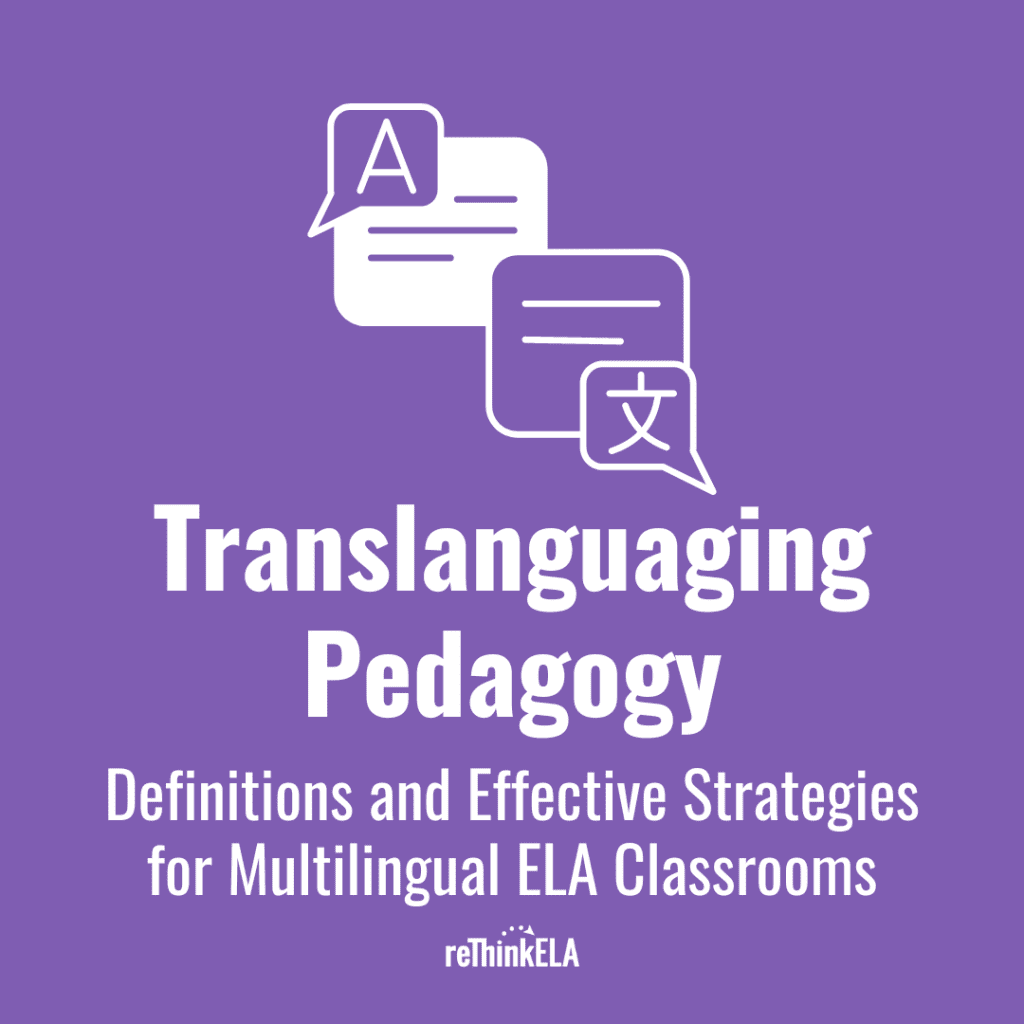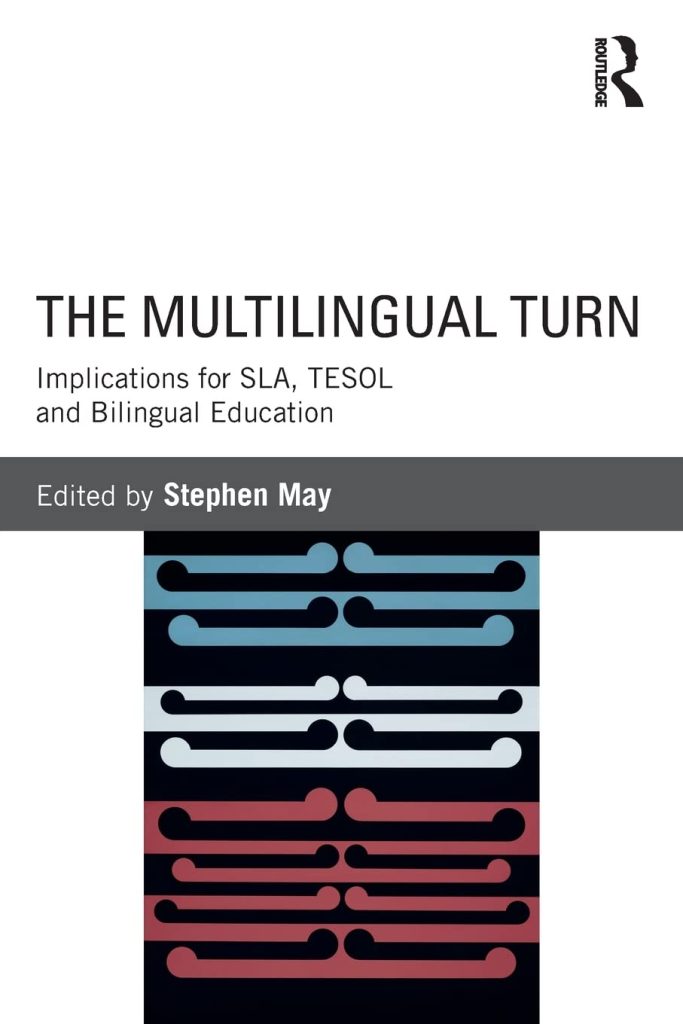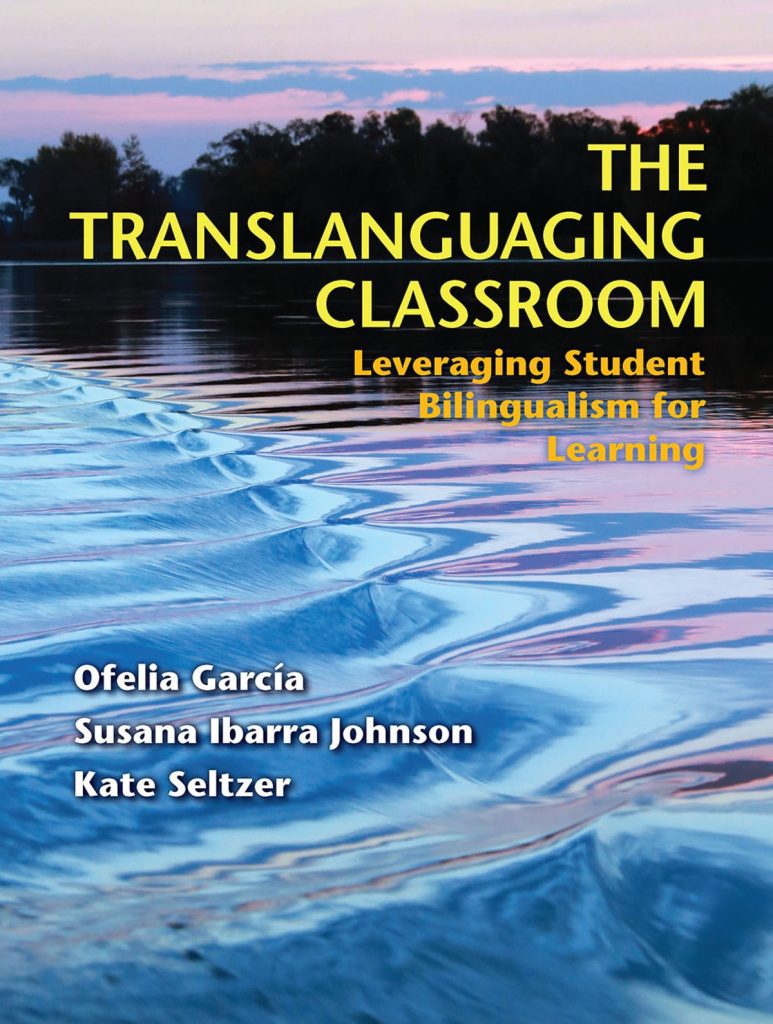
Over the 10 years I spent as a classroom English teacher in more than one district, I noticed how diverse, multilingual classrooms were becoming the norm rather than the exception. While some teachers lamented this change, the best ones realized they needed to adapt to this reality and developed pedagogies that effectively addressed the needs of multilingual learners. One of the most promising approaches in this regard is the translanguaging pedagogy. As part of my doctoral studies, a group of my colleagues in a Implications of Diversity course and I created a presentation on “Language Diversity in English Language Arts and World Language Classes.”
One of the readings we incorporated in the presentation was the Heinemann Blog podcast episode on "The Transformative Power of Translanguaging in Literature with Carla España and Luz Yadira Herrera." For me, one of the key insights from this podcast episode was the application of translanguaging pedagogies for monolingual teachers like myself. While I am working on learning Spanish, I have not reached a level of confidence to call myself multilingual even on a passive (reading and listening) level. Throughout my career, one of my overarching questions was: How can I empower multilingual writers in my classroom when I only communicate in one language?
Translanguaging pedagogy is an answer to that question that I first discovered in a Teaching Language — Theory & Practice course taught by Dr. Madina Djuraeva during the Spring 2022 semester and wrote about briefly in “How To Support Multilingual Learners In An English Language Arts Class” and hinted at in “How To Teach Dr. J’s ‘3 Ways to Speak English’ For High School Students.”
In case you don’t have time to read all of those resources, here’s a short definition:
Translanguaging pedagogy is a teaching method that encourages students to use all their language resources to make meaning in the classroom. It recognizes the fluidity and richness of multilingualism and aims to leverage it for learning.
In this article, we will explore the definitions and effective strategies of translanguaging pedagogy.
What is Translanguaging Pedagogy?
Translanguaging pedagogy is an approach to teaching and learning that enables you to recognize and value the multilingual repertoires of your students. It allows students to use all their linguistic resources, including their first language(s), to make sense of new concepts and ideas. It involves the active and intentional use of different languages in the classroom to support learning. Translanguaging pedagogy is not about code-switching or bilingualism, but rather a holistic view of language that recognizes the fluidity and diversity of multilingualism (May & Canagarajah, 2014).
Benefits of Translanguaging Pedagogy
Translanguaging pedagogy offers several benefits for both students and teachers in multilingual classrooms. Some of the benefits include:
- 1It acknowledges and values students' linguistic diversity, which can promote a positive learning environment and increase students' self-esteem.
- 2It allows students to make connections between their prior knowledge and new concepts by using their first language(s) as a scaffold.
- 3It can lead to deeper understanding and critical thinking by allowing students to express themselves fully in their preferred language(s).
- 4It promotes active engagement and participation by removing language barriers and increasing students' confidence in expressing themselves (Cenoz & Gorter, 2020).
Strategies for Incorporating Translanguaging Pedagogy in the Classroom
Effective use of translanguaging pedagogy requires intentional planning and implementation. Here are some strategies that teachers can use to incorporate translanguaging pedagogy in the classroom:
- 1Create a welcoming and inclusive classroom environment that values linguistic diversity (Jaspers, 2014).
- 2Encourage students to use their first language(s) as a resource for learning by explicitly modeling and normalizing translanguaging practices (Wei & García, 2022).
- 3Use translanguaging to build students' vocabulary by asking them to provide translations of key terms and concepts in their first language(s) (Wei, 2017).
- 4Use translanguaging to scaffold learning by allowing students to express their understanding in their first language(s) before transitioning to English.
- 5Use translanguaging to promote collaborative learning by allowing students to work together in their preferred language(s) (Lindberg et al., 2022).
- 6Incorporate translanguaging in assessment by allowing students to demonstrate their understanding in their first language(s) (García, 2009).
- 7Provide professional development for teachers to increase their knowledge and understanding of translanguaging pedagogy (David et al., 2021).
FAQs about Translanguaging Pedagogy
Translanguaging pedagogy is designed specifically for multilingual classrooms, but its principles can be applied in monolingual classrooms as well. Teachers can encourage the use of students' home languages to build vocabulary, promote engagement, and deepen understanding (de los Ríos & Seltzer, 2017).
Translanguaging pedagogy is not the same as code-switching. Code-switching refers to the practice of switching between languages in a conversation, while translanguaging pedagogy is a holistic approach to teaching that recognizes and values the fluidity and diversity of multilingualism. In translanguaging pedagogy, students are encouraged to use all their linguistic resources to make meaning in the classroom.
Translanguaging pedagogy can be especially beneficial for ELLs as it allows them to make connections between their prior knowledge and new concepts by using their first language(s) as a scaffold. It can also lead to deeper understanding and critical thinking by allowing students to express themselves fully in their preferred language(s). Additionally, translanguaging pedagogy can promote a positive learning environment and increase students' self-esteem by valuing their linguistic diversity.
One common misconception about translanguaging pedagogy is that it promotes bilingualism or encourages students to rely solely on their first language(s). However, translanguaging pedagogy is not about promoting bilingualism, but rather using all available linguistic resources to support learning. Additionally, translanguaging pedagogy does not advocate for using only one language, but rather a fluid and dynamic use of multiple languages in the classroom (Canagarajah, 2011).
Teachers can incorporate translanguaging in assessment by allowing students to demonstrate their understanding in their first language(s). This can include written assignments, presentations, or group projects. Teachers can also provide feedback in students' first language(s) to promote deeper understanding and to reinforce the value of linguistic diversity.
Translanguaging pedagogy is an innovative and effective approach to teaching and learning in multilingual classrooms. It recognizes and values the linguistic diversity of students and encourages the use of all language resources to support learning. By incorporating translanguaging pedagogy strategies, teachers can create a welcoming and inclusive classroom environment that promotes engagement, critical thinking, and deeper understanding.
References
- Canagarajah, S. (2011). Translanguaging in the classroom: Emerging issues for research and pedagogy. Applied Linguistics Review, 2(2011), 1–28.
- Cenoz, J., & Gorter, D. (2020). Teaching English through pedagogical translanguaging. World Englishes, 39(2), 300–311.
- David, S. S., Shepard‐Carey, L., Swearingen, A. J., Hemsath, D. J., & Heo, S. (2021). Entry points and trajectories: Teachers learning and doing translanguaging pedagogy. TESOL Journal, 13(1).
- de los Ríos, C. V., & Seltzer, K. (2017). Translanguaging, Coloniality, and English Classrooms: An Exploration of Two Bicoastal Urban Classrooms. Research in the Teaching of English, 52(1), 55–76.
- García, O. (2009). Education, multilingualism and translanguaging in the 21st century. In T. Skutnabb-Kangas, A. K. Mohanty, M. Panda, & R. Phillipson (Eds.), Multilingual education for social justice: Globalising the local (pp. 140–158). essay, Orient Black Swan.
- Jaspers, J. (2014). Modelling linguistic diversity at school: The excluding impact of inclusive multilingualism. Language Policy, 14(2), 109–129.
- Lindberg, R., McDonough, K., & Ammar, A. (2022). The sociocognitive functions of English use during L2 French collaborative writing tasks. Language Teaching Research.
- May, S., & Canagarajah, S. (2014). Theorizing a competence for translingual practice at the contact zone. The multilingual turn: Implications for SLA, Tesol and bilingual education (pp. 78–102). essay, Routledge.
- Wei, L. (2017). Translanguaging as a practical theory of language. Applied Linguistics, 39(2), 261–261.
- Wei, L., & García, O. (2022). Not a first language but one repertoire: Translanguaging as a decolonizing project. RELC Journal, 53(2), 313–324.


